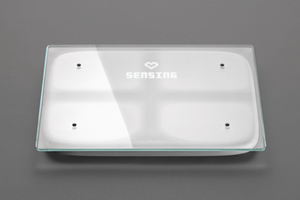December 18, 2019
|
Mindflex, from Mattel and NeuroSky, used brainwaves to control a series of fans to navigate a floating ball through an obstacle course. (Image source: NeuroSky) |
Remember about five years ago when several consumer headsets from NeuroSky and Emotiv were pitched as a computer game controllers? For example, NeuroSky promoted its EEG Headset as a training aid for young padawans to focus their minds through various exercises so they could control the movement of tablet-projected holograms. Based upon the wearer's focus and concentration, the brainwave sensors on the EEG headset would allow them to interact with an application on a table.
NeuroSky and others (most notably, Emotiv) have created EEG headsets for gaming, neurological rehabilitation, and other applications. These headsets are examples of brain computer interface (BCI) technology – a computer-based system that acquires brain signals, analyzes them, and translates them into commands that are relayed to an output device like a computer, game console, medical prosthetic, or similar devices.
A BCI doesn’t actually read thoughts but rather detects the smallest of changes in the energy radiated by the brain when you think in a certain way. A BCI recognizes specific energy/frequency patterns in the brain. Some believe that the combination of humans and technology could be more powerful than artificial intelligence (AI) alone. For example, instead of relying on human perception and reasoning, one could use neurotechnologies to improve our perception, as in the case of interpreting a blurry security camera image before deciding whether to take action.
In the future, perhaps the carbon-based mind will connect directly with silicon-based artificial intelligence, robots, and other minds through BCI technologies to greatly extend our existing senses or maybe add new ones.
In order to appreciate what BCI technologies have to offer, it helps to understand a bit of their history.
|
Infographic - History of Brain Computer Interface (BCI) Tech |
RELATED ARTICLES:
John Blyler is a Design News senior editor, covering the electronics and advanced manufacturing spaces. With a BS in Engineering Physics and an MS in Electrical Engineering, he has years of hardware-software-network systems experience as an editor and engineer within the advanced manufacturing, IoT and semiconductor industries. John has co-authored books related to system engineering and electronics for IEEE, Wiley, and Elsevier
About the Author(s)
You May Also Like






